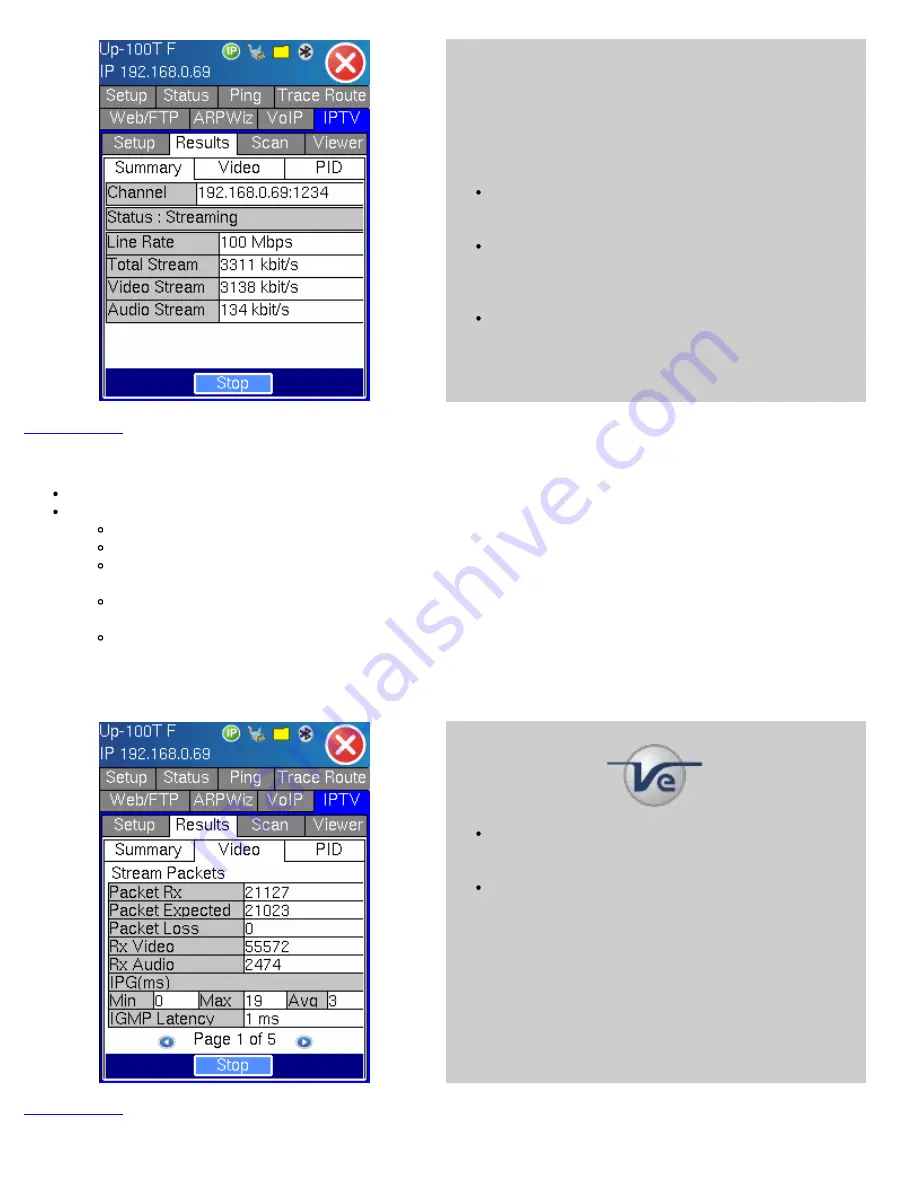
Video streams typically consume more bandwidth than
audio streams, which in turn use more bandwidth than
data streams.
In this manual, MPEG-2 refers to the video transport
stream defined in IEC13818 standard and not any
compression technology used in the payload or
transport packet.
The MPEG-2 Transport stream contains seven packets
of 188bytes each which transports either the MPEG-2,
MPEG-4 or VC-1 encoded video.
IPTV Result Video (Page #1)
displays the following results;
Packet Rx
- is the (total number of packets received) - Packet loss (total number of packets lost)
Packet loss
- measured by analyzing video packet flows and determining the presence of a continuity error event.
Because each video packet carries a sequence number, continuity errors can be determined easily.
Missing, OOS and duplicate packets are counted as errors.
Packet loss is typically seen on all channels arriving at the customer, because they are not source or content related
problems - analysis of the DSL or Ethernet physical layer normally determines the problem area.
Packet loss impacts video quality and leads to highly visible errors. When lost packets contain I-frames, the impact
will be more pronounced because the STB has to wait for the next I-frame to “reset” itself.
H.264 encoding which uses a longer Group of Pictures (GOP) structure aggravates problems because higher
compression contains more information. Consequently, the loss of a single H.264 frame will likely have a greater
impact on picture quality.
IPTV Video Stream
IPTV and Packet Loss
Due to the real-time nature of IPTV, the MPEG-2 TS is
transported over UDP (IPv4/UDP), thus retransmission
or re-ordering of packets is not intended.
Video quality is largely determined by network
performance parameters including Packet loss, Packet
jitter and IGMP latency.
.
.
.
.
MX100/120 e-Manual D07-00-004 Rev A04
Page 94 of 115






























